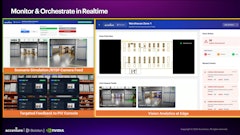
2020 served as a wake-up call for supply and demand chain leaders, proving they must take a more active role in shaping and managing demand. Instead of leaning out production processes and squeezing every bit of waste from their supply chains, leaders need to position demand as the drumbeat of their organization and manage accordingly.
Demand volatility will likely continue
In the past, disruptions were very supply centric. A supplier or plant was affected, and as a result, your ability to buy materials or produce goods was impacted. But, the Coronavirus disease (COVID-19) flipped that assumption on its head, radically impacting demand across sectors. Now, after over 50 years focusing on supply chain management and efficiency, it's time for many organizations to pivot in favor of active demand management.
Traditional demand management focused on forecasts that were based solely on historical sales and the underlying trends and seasonality, and supplemented by input from sales and marketing to get to a “consensus” forecast. This method has become dangerously unreliable for most organizations, as history is no longer an accurate indicator of today’s realities. Insights that were relevant two years—or even six weeks ago—can quickly become obsolete and simply executing your way out of uncertainty is no longer enough. Instead, we must anticipate the future by actively leveraging internal and external signals. External market, economic and social data, for instance, can have as much value as internal sales data. Organizations need to become more strategic and predictive in their efforts, and a transition to active demand management is a critical lever to achieving success.
How to help your organization embrace demand management
This transition requires a mindset shift. It’s no longer about forecasting demand or planning off of consensus – it’s about actively shaping and managing demand from the start. This requires looking at key demand levers – pricing and promotional activity, new product strategies, evolving buyer behaviors and more – and understanding that more strategic planning in those areas will help you capture lost sales, grow market share, and be more responsive to your customers. To accelerate the time to success it’s important to anchor your efforts on a few key elements.
● Know your demand signals. Identify who in your organization is closest to demand and what signals are most critical, so that you can take the steps to shape that demand. If you’re a commercially driven organization, for instance, that might mean starting with your sales team. For others, it may mean taking raw point-of-sale data and applying forecasting algorithms. Social sentiment is a critical signal for lifestyle brands, whereas other industries rely on external socioeconomic data. Either way, the priority is to unlock the keys to identifying those signals and the actions you can take to ultimately shape the demand.
● Process first, technology second. Often, there’s a rush to implement the newest technology as a quick fix. While the right technology is crucial, if your processes aren’t aligned internally your technology will not be able to enable long-term success with demand management. Instead, align with key stakeholders on processes, goals and projections. Ensure finance, sales and supply chain plans and forecasts are developed cohesively and leverage ongoing visibility and transparency to more accurately manage and shape demand.
● Focus on forecast value add. Like lean manufacturing, this is the ability to analyze how an organization determines demand and assesses that each step and input adds value by measuring it along the way. This holds the value of every step being accountable to the entire system. To make this shift, supply chain leaders need to move from forecast accuracy at a unit-based value to a revenue- or margin-based estimate of value.
● Get on the same page. Demand management doesn’t work without visibility up and down the supply chain. If you only give your transportation provider 24-hour’s notice for a massive shipment, you likely won’t get the trucks you need to make that shipment a success. Thankfully cloud-based platforms make it easier to collaborate in real-time both within your organization and across your supply chain ecosystem. As those bad habits evaporate, successful demand management becomes much easier.
As we continue to see the effects of disruption on demand, it’s critical that leaders assess their capabilities and ensure their teams are set-up to proactively shape and manage demand. Starting with key elements like understanding your demand signals and focusing on forecasting value add should help make the transition easier. Regardless of where you start, transitioning away from passive execution and embracing active demand management will allow your organization to be more strategic and agile in the future when disruption occurs.




















